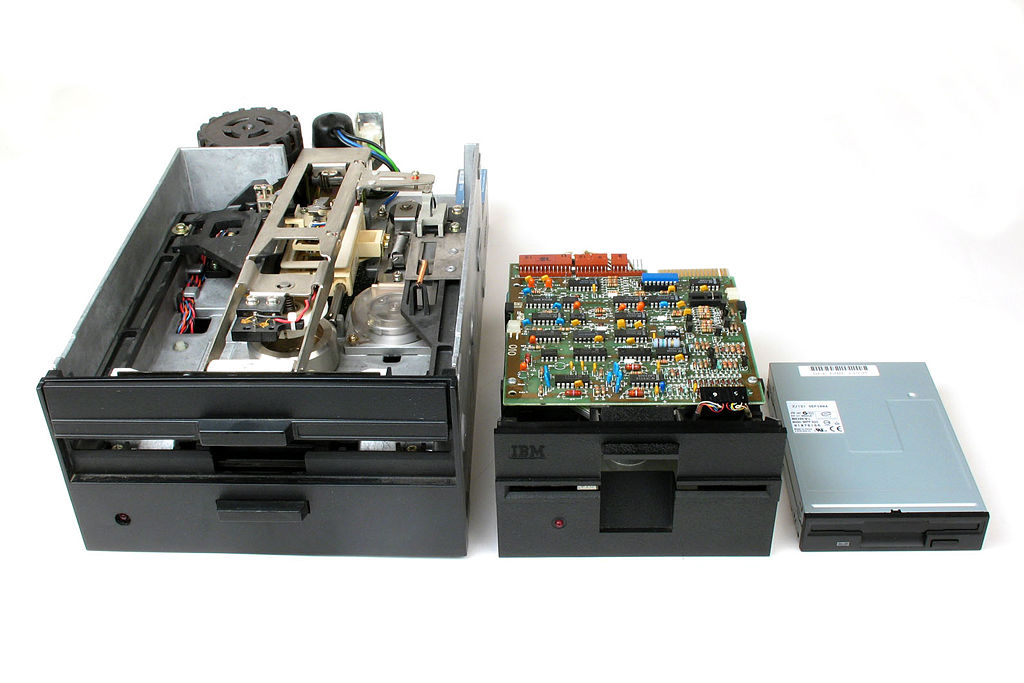Floppy disk, the official device of size does not matter and the symbol of every saving icon known to man. Much how the death of Jesus became the symbol of saving us from our sins in trade for His blood on the cross, the floppy disk eventually died off and became our symbol of saving files and document. Sure that may be a very odd comparison to some, but there has to be a reason why this old tech is still remembered in an age where physical media is on the decline and most of our files, photos, videos, etc are in the cloud. No other piece of technology is so recognizable, yet so unknown to many.

The floppy disk was first introduced commercially in the late 1960s and these disks were 8 inches in size! These disk were mostly used by IBM computers in 1971 and were later produced and improved by IBM and other companies such as Memorex. The floppy disk got it’s name from… you guessed it… because they wobbly and flexible, even though IBM originally called it “Type 1 Diskette”, creative name isn't it, the floppy disk name stuck around with IBM themselves adopting the name . Something I would like to clear up now is that disk spelled with a “K” are any circular objects that works magnetic media such as hard drives and floppy disk, and this disk tend to be enclosed in a protective housing. On the other disk with a “C” is any optical media that works with lasers like DVD’s and CD’s. This was something I wanted to clear up for anyone wondering why I was spelling disk with a “k” instead of spelling disc with a “c”. Ok back to the history… later in 1976 Shugart Associates showed off his 5 ¼ floppy and won out any other competing diskette out there with it’s higher capacity of 360KB. In the later part of the 1980’s the 5 ¼ floppy disk were becoming obsolete with the new 3 ½ floppy. These disk were superior in every way, like in size, durability, and capacity of now 1.44 megabytes of storage! The only downside though was that 3 ½ floppies were not floppy anymore thanks to it’s hard plastic housing.

The floppy disk work very similarly to a cassette in which they both use iron oxide or ferromagnetic, in which if made contact with a magnetic field it is permanently changed by the magnetic field, also it has a beginning and an end like a track. The floppy disk is cut up into tracks, similarly how a pie or pizza is cut up, and each track has their own sectors. The drive itself work by having a motor spin the disk at around 300 or 360 RPM and also has a read/write head read or write what ever data on the disk, while on the other side there is a much wider head which eases data before writing. All of this is done using electro magnetic.

It is a very simple and cheap format which allowed the floppy disk to become the standard it once was in the early days of computing. Although now we do not have to worry really about turning in any work done on a computer physical, thanks to the cloud. There was a time in which people had to rely on floppy disk to transfer and documents, and as you just learn puting floppy disk anywhere close to a relatively strong magnetic, like a speaker, could wipe it out completely. Maybe this could be the reason the floppy disk image lives on. People tend to remember the bad times, and the hassle of carrying these disks around (because many programs were on more than one disk)and the dread of lost data could what lead programmers to let the legacy of the floppy disk live on.
FUN FACT: Magnetic storage can be traced back to the 1900 World Fair by a Danish engineer named Vlademar Poulsen.
Source:https://en.wikipedia.org/wiki/Floppy_disk
https://computer.howstuffworks.com/floppy-disk-drive2.htm
http://www.encyclopedia.com/science-and-technology/computers-and-electrical-engineering/computers-and-computing/floppy-disk
What a great blog! I love how you broke down how the floppy disk is used, why it’s spelled disk instead of disc, and the fun fact at the end. I remember my mother having some of these but I didn’t know that they were such a hassle and that they could easily have the items on it wiped out. It’s cool to see technology from the past and know the history on it and how it plays a role or how it shaped the technology we have today.
ReplyDeleteThanks for clearing up the difference between "disk" and "disc". I had no idea. Also really interested by the fun fact and will quite possibly look into it more.
ReplyDeleteAh I remember the floppy disk despite never using it. I always had some in my desk drawer and I assume ancient photos are saved on it. I am still curious and perhaps one day I’ll figure out what is on there. Aside from that great blog!
ReplyDeleteYour analysis of the use and structure of floppy disks and their short but important impact on computer engineering today was so informational. I cannot wait for next weeks blog!
ReplyDeleteI had no idea about "disk" and "disc", pretty eye opening about the history too, and I honestly have owned and seen Floppy Disks but i have never seen how they are used
ReplyDelete